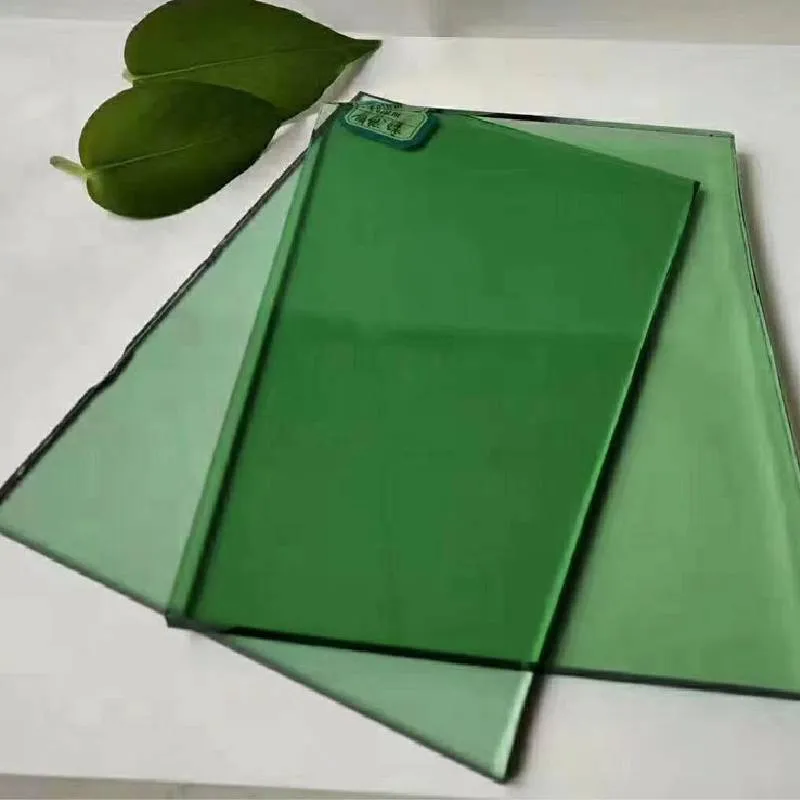Understanding Heat Tempered Glass Properties and Applications
Heat tempered glass, also known as toughened glass, has become increasingly popular in both residential and commercial applications due to its enhanced strength and safety characteristics. The tempering process involves heating glass to a high temperature and then cooling it rapidly, which results in significant changes to the glass's internal structure. This process elevates the glass's strength, making it approximately five to six times more resistant to impact compared to standard float glass.
One of the most notable properties of heat tempered glass is its ability to withstand extreme temperatures. The toughening process imparts thermal stress resistance, meaning that this type of glass can endure rapid temperature fluctuations without breaking. This is particularly valuable in environments where glass is exposed to direct sunlight or thermal loads, such as in facades of commercial buildings or in shower enclosures.
In terms of safety, heat tempered glass is designed to shatter into small, blunt pieces when broken, reducing the risk of injury. In contrast, ordinary glass can shatter into sharp shards that pose significant dangers. This characteristic makes heat tempered glass an ideal choice for applications where safety is a priority, such as in glass doors, windows, and balustrades. The safety factor further extends its use in the automotive industry, where tempered glass is often used for side and rear windows.
heat tempered glass
Moreover, heat tempered glass can be manufactured in various thicknesses and sizes, making it highly versatile. It can be customized to fit the design requirements of different buildings or specific product needs. Architectures are increasingly integrating this type of glass into their designs, taking advantage of its aesthetic appeal combined with its robust performance. The visual clarity and minimalist look of tempered glass enhance the overall aesthetic of any structure, making it a popular choice for modern architectural designs.
In addition to its structural benefits, heat tempered glass also offers good insulation properties. When used in double or triple-glazing systems, it contributes to energy efficiency in buildings, helping to lower heating and cooling costs. This characteristic aligns with the growing demand for sustainable building materials and energy-efficient solutions in construction.
In conclusion, heat tempered glass is a remarkable material that provides numerous advantages, including strength, safety, thermal resistance, and aesthetic appeal. Its wide range of applications in various industries makes it a vital component of modern architecture and design. As technology advances, the potential for innovative uses of heat tempered glass will likely continue to expand, reinforcing its status as a material of choice in contemporary construction.
 Afrikaans
Afrikaans  Albanian
Albanian  Amharic
Amharic  Arabic
Arabic  Armenian
Armenian  Azerbaijani
Azerbaijani  Basque
Basque  Belarusian
Belarusian  Bengali
Bengali  Bosnian
Bosnian  Bulgarian
Bulgarian  Catalan
Catalan  Cebuano
Cebuano  Corsican
Corsican  Croatian
Croatian  Czech
Czech  Danish
Danish  Dutch
Dutch  English
English  Esperanto
Esperanto  Estonian
Estonian  Finnish
Finnish  French
French  Frisian
Frisian  Galician
Galician  Georgian
Georgian  German
German  Greek
Greek  Gujarati
Gujarati  Haitian Creole
Haitian Creole  hausa
hausa  hawaiian
hawaiian  Hebrew
Hebrew  Hindi
Hindi  Miao
Miao  Hungarian
Hungarian  Icelandic
Icelandic  igbo
igbo  Indonesian
Indonesian  irish
irish  Italian
Italian  Japanese
Japanese  Javanese
Javanese  Kannada
Kannada  kazakh
kazakh  Khmer
Khmer  Rwandese
Rwandese  Korean
Korean  Kurdish
Kurdish  Kyrgyz
Kyrgyz  Lao
Lao  Latin
Latin  Latvian
Latvian  Lithuanian
Lithuanian  Luxembourgish
Luxembourgish  Macedonian
Macedonian  Malgashi
Malgashi  Malay
Malay  Malayalam
Malayalam  Maltese
Maltese  Maori
Maori  Marathi
Marathi  Mongolian
Mongolian  Myanmar
Myanmar  Nepali
Nepali  Norwegian
Norwegian  Norwegian
Norwegian  Occitan
Occitan  Pashto
Pashto  Persian
Persian  Polish
Polish  Portuguese
Portuguese  Punjabi
Punjabi  Romanian
Romanian  Russian
Russian  Samoan
Samoan  Scottish Gaelic
Scottish Gaelic  Serbian
Serbian  Sesotho
Sesotho  Shona
Shona  Sindhi
Sindhi  Sinhala
Sinhala  Slovak
Slovak  Slovenian
Slovenian  Somali
Somali  Spanish
Spanish  Sundanese
Sundanese  Swahili
Swahili  Swedish
Swedish  Tagalog
Tagalog  Tajik
Tajik  Tamil
Tamil  Tatar
Tatar  Telugu
Telugu  Thai
Thai  Turkish
Turkish  Turkmen
Turkmen  Ukrainian
Ukrainian  Urdu
Urdu  Uighur
Uighur  Uzbek
Uzbek  Vietnamese
Vietnamese  Welsh
Welsh  Bantu
Bantu  Yiddish
Yiddish  Yoruba
Yoruba  Zulu
Zulu 

